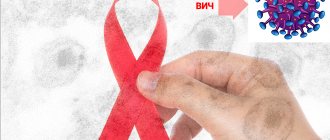Aphasia is a speech disorder due to problems with the cortical speech centers of the brain. In this case, there are no hearing impairments and the articulatory apparatus is completely preserved, that is, there are no other anatomical reasons for speech disorders. Most often, aphasia occurs in acute cerebrovascular accidents (stroke), traumatic brain injury, tumors, infectious and inflammatory lesions of brain tissue (encephalitis). Thus, aphasia is a symptom of a serious neurological disease. Let's try to figure out how exactly aphasia manifests itself, what types of it exist and how it is diagnosed. This article is dedicated to these issues.
The term aphasia was proposed back in 1864 by A. Trousseau; it comes from the Greek prefix “a,” meaning negation, and the word “phasis,” meaning speech. Much time has passed since then, various variants of speech impairment have been studied (from complete absence to minor changes imperceptible to the average person), but the wording remains exactly the same to this day.
Aphasia is spoken of as a symptom of a neurological disease when the intellect is not affected and speech was not initially impaired, that is, under the condition of normal speech development before the disease. Underdevelopment of the ability to speak from childhood is called alalia, and this is a completely different disorder.
Definition and classification
Amnestic aphasia is a type of neuropsychological speech disorder in which forgetting the names of objects or names is observed. The main factor causing the development of this disorder is organic damage localized in the temporal and parietal lobes of the cerebral hemispheres. In such a situation, the patient understands what object is in front of him and knows why it is needed, but cannot name it. Most often, during a conversation, patients describe the functions of an object, characterize it by shape and color, but cannot remember the name.
Doctors identify another subtype of this speech disorder - optical-mnestic aphasia, which develops with primary damage to the temporal lobe cortex. Aphasia is accompanied by the inability to draw objects from memory, only by seeing the object in front of oneself. Patients can describe its characteristics, but not picture or name it.
What can be concluded?
Although sensory aphasia is a problem that can happen to anyone, there is no need to lose hope.
You can take preventive measures: monitor your blood pressure, avoid head injuries, and consult a doctor if you suspect or feel worse.
With a disorder, a person does not forget how to speak completely , but it is difficult to perceive the oral speech of another person, and his own vocabulary is poor, and his thoughts are confused.
However, with the help of a speech therapist and psychologist, speech can be gradually restored, the main thing is persistence and a positive attitude.
Causes
The pathology is characterized by damage to the gray and adjacent white matter of the temporal and parietal lobes, which explains the disruption of connections between groups of nerve cells. The reasons leading to brain damage are as follows:
- infectious and inflammatory diseases of bacterial, viral or fungal etiology: encephalitis, meningitis, brain tissue abscess;
- toxic damage to the cortex due to poisoning with alcohol, drugs or neurotoxic poisons;
- injuries: accidents, blows with blunt objects, bruises or concussions, rupture of neural connections in the temporal lobe;
- consequences of surgical treatment of CNS pathologies;
- tumor formations;
- acute cerebral circulatory disorder;
- chronic circulatory failure in brain tissue (transient ischemic attacks);
- Alzheimer's or Pick's disease.
In addition to direct causes, there are risk factors that lead to such diseases: senility or old age, metabolic disorders in the body, obesity and atherosclerosis, smoking and alcoholism, inactive lifestyle, genetic predisposition, coronary heart disease, hypertension, etc.
Features of the disorder
This form of aphasia is manifested by the fact that patients do not understand what is being said to them. Often the problem arises in a domestic situation. People are shown a cup or plate of soup, asked to eat, sit down, and use a spoon. Patients look at all this and somehow orient themselves. But in general, with sensory aphasia, speech understanding suffers. With complex forms of pathology, situations arise when one’s own pronunciation also suffers.
A person chases elusive sounds, gets lost, pronounces words incorrectly. Speech resembles a mixture of different sounds and phrases. Everything is confused, it is difficult for even a healthy person to recognize this pronunciation.
Some words are spoken quickly and often emotionally continuously. The patient cannot feel the pronounced sounds, how they are used in words because they do not differ.
The disorder is localized in the superior temporal regions of the left dominant hemisphere if the person is right-handed. In such a situation, it is necessary to ensure the correct behavior of relatives. Physical hearing is absolutely normal, there are no abnormalities.
There is no need to shout at the person. People often make such mistakes, and patients get nervous because their voices are raised at them. Saying it louder won't make it better. Calm speech, clear pronunciation without haste is required. Complex words should be avoided. Abstract concepts, try to communicate on everyday topics in simple short phrases rather slowly and calmly and try to articulate everything correctly.
Such patients are very emotional, always excited, trying to do something, but they fail, and get upset. In such situations, excessive exaltation is unacceptable.
It is always necessary to restrain emotional excitement, to inspire the patient with your calmness that everything will be fine, classes will begin now, the pronunciation function will be restored, speech recognition will return to normal. In this way, the excitement will gradually decrease.
Clinical manifestations
The inability to name an object is the main symptom of pathology, however, it is very difficult to identify this during normal communication. But the disease is manifested not only by aphasia. Symptoms include the following:
- Frequent repetition of the same words or phrases.
- Slowness of speech with pronounced pauses between words or, conversely, patients begin to speak very quickly and illogically.
- Speech becomes descriptive, that is, the patient skips nouns and speaks only with adjectives or verbs.
- A person easily describes an object and talks about its functions, but cannot remember the name of the object.
- When the patient is prompted with the first letter or syllable of the name of an object, he easily remembers the entire word.
- Mental disorders develop against the background of damage to other areas of the brain and can be characterized by frequent mood swings, aggression, isolation, foolishness, depression, apathy, paresis or paralysis, forgetfulness, etc.
Despite the speech impairment, other brain functions associated with pronouncing words are not affected. The patient can write and read, which distinguishes the disease from alalia.
What is amnestic aphasia?
Aphasia is a neurological disease of organic nature, which is formed as a result of the death of neurons located in the cerebral cortex area, responsible for the synthesis and formation of speech function, as well as the perception of speech and non-verbal signals of surrounding people. Aphasia is always an acquired pathology, i.e. it is observed in people with initially normally functioning speech function, so it is important not to confuse aphasia with alalia if the disease is observed in childhood.
A wide range of reasons can lead to the development of pathology, but the final pathogenetic mechanism of this disease is the same and consists in extensive death of nervous tissue localized in specific areas of the brain responsible for speech.
Establishing diagnosis
Since the pathology is associated with brain damage, the patient is recommended to make an appointment with a neurologist or psychiatrist. Specialists in this profile will be able to conduct the necessary research and select treatment.
During the initial consultation with a specialist, the doctor conducts a comprehensive diagnosis. It includes the following actions:
- Collection of complaints and medical history. It is necessary to know the time of onset of symptoms, against what background they developed and what chronic diseases the patient has.
- Assessment of neurological status. Gait, balance, cognitive skills are examined, the emotional-volitional sphere is assessed, an object recognition test is carried out, tests are carried out to assess the functional activity of the speech apparatus and individual components of speech - vocabulary, phonetics and grammar.
- Laboratory tests (clinical and biochemical blood tests, general urine examination, according to cerebrospinal fluid indications).
- X-ray of the skull.
- Ultrasound examination of neck vessels with Doppler.
- Computer, magnetic resonance or positron emission tomography of the brain to detect organic diseases of the central nervous system.
The list of procedures used for diagnosis depends on the symptoms a person has and concomitant diseases. Under no circumstances should you make a diagnosis yourself, as this often leads to progression of the underlying pathology.
How to prevent the development of the disease
Prevention of amnestic aphasia is based on preventive measures that cause damage to the structures of the central nervous system. This includes the following medical recommendations:
- avoid situations that can lead to traumatic brain injuries (use a helmet and other protective equipment when engaging in hazardous sports);
- if you have a disease of the cardiovascular system or other internal organs, follow the doctor’s instructions and do not self-medicate;
- after neurosurgical operations, undergo full rehabilitation measures aimed at restoring cognitive skills;
- regularly engage in sports, including aerobic exercise and strength training;
- eliminate bad habits - drinking alcohol and smoking;
- normalize the diet by excluding from it all fatty, salty, smoked foods, and increasing the proportion of lean meats (chicken, rabbit), fish, fruits, vegetables and berries;
- in old age, continue to read books, learn poetry, do handicrafts and other hobbies (such activities prevent the development of Alzheimer's disease and Pick's disease).
If you detect any signs of amnestic aphasia in yourself or a close relative, you should immediately seek medical help. The pathology is treated by a neurologist or psychiatrist. In the absence of these specialists, it is necessary to visit a therapist who will conduct an initial diagnosis and refer the patient for further consultation to specialized medical institutions.
The prognosis depends on the degree of damage to the nerve tissue and the time of initiation of treatment and rehabilitation. With a small affected area and early initiation of therapy, the patient gradually recovers normal speech and other cognitive skills. If treatment is started late, its effectiveness is limited. Residual speech defects of varying severity are possible. The support of loved ones who are directly involved in the rehabilitation of the patient is important in eliminating aphasia.
You may also be interested in:
Correction of violations
Comprehensive diagnostics allows you to make an unambiguous diagnosis. Based on the research results, the patient’s age and mental state, the attending physician selects a treatment regimen. Therapy is always complex.
If aphasia is caused by a brain injury, stroke or tumor, then the patient urgently needs surgical treatment. Only after eliminating the immediate cause of the condition can we proceed to restoring the patient’s speech.
After emergency treatment, doctors recommend starting rehabilitation. At the first stage, a psychologist and speech therapist work with the patient. They teach the patient to adequately perceive objects and think figuratively. Gradually, the number of pictures and visual series increases, thereby forming a vocabulary. The second stage is characterized by adaptation to spoken language, reducing pauses between words and phrases. The final stage of speech therapy correction is to increase speech reserve and improve the ability to perceive more information.
Treatment
The choice of treatment method depends on the type and cause of the disorder. For brain abscesses and tumors, amnestic aphasia is treated surgically and with medication after surgery. Elimination of infectious factors requires hormonal and antibacterial therapy. Aphasia due to a stroke takes a long time to treat; it is necessary to seek the help of a massage therapist and undergo courses of neurological and physiological rehabilitation.
Restoring cognitive functions is a long and labor-intensive process. Neurologists, psychologists, psychotherapists, and speech therapists must work with the patient. Complete recovery of patients with aphasia rarely occurs, but it is possible to achieve serious positive results, although this may take more than one year.
Diagnostics
Diagnosis is carried out in a hospital setting. At the initial stage, an initial examination by a neurologist is indicated. Since the patient cannot answer questions, the presence of a relative or someone who can answer some questions for the patient is desirable, but this is not necessary. Typical primary signs are also noticeable: anxiety, excitability, misunderstanding of speech, difficulties with speaking.
A routine neurological examination is mandatory. The simplest basic reflexes are tested.
As part of the assessment of the general condition, the severity of damage to cerebral structures, and the nature of such, a group of instrumental measures is prescribed.
MRI is the basis and gold standard for diagnosis. Aimed at visualizing neural tissue. Allows you to diagnose all structural disorders. If necessary, targeted tomography of individual areas of the brain is prescribed. Especially the temporal lobes. Gadolinium contrast enhancement is often used. The drug accumulates in the changed tissues and enhances the pattern. Contrast is indispensable when diagnosing tumors. Infrequently, sensory aphasia is also possible with multiple sclerosis, which will also be clearly visible on post-contrast images in all details. For high-quality diagnostics, you need a high-field device with a power of 1.5 Tesla. If possible. Low-field ones will provide less data.
MRI of the brain
If vascular neoplasms are detected, angiography is additionally performed to better visualize the disorder.
Dopplerography of the neck vessels and duplex scanning of the brain are mandatory to assess the degree of blood flow in the cerebral structures. This will allow you to detect cerebrovascular insufficiency and assess its severity.
Specialists whose help will also be required are a neurosurgeon, a vascular surgeon. The characteristics of sensory aphasia within a specific medical history should be as detailed as possible in order to determine the type of pathological process and its features. Without this, there can be no effective treatment.
Main symptoms
With different types of aphasia, different symptoms are observed, but there are also common disorders:
- First of all, this disorder affects other mental processes. The inability to express oneself through words for a long time affects the decrease in intellectual activity. It also affects the emotional sphere - the patient may develop depression.
- Personally. A person suffering from aphasia is largely socially isolated and maladapted, i.e. cannot fully function in society, which leads to certain changes in his personality - he becomes withdrawn, uncommunicative, irritable, and some character traits become sharpened.
With aphasia, the following speech disorders may be observed:
- Writing disorder: dysgraphia.
- Reading disorder: dyslexia.
- Perseverations: a person can repeat the same word over and over again.
- Bradylalia: or "chanted" speech. Clear division of words into syllables during pronunciation.
- Explosive speech: violation of the rhythm of pronunciation. The patient either stretches out sounds and words, or, conversely, pronounces them too quickly.
- Paraphrase: replacement of individual sounds or letters. For example, a patient may say “goth” instead of “cat,” etc.
- Contamination: continuous pronunciation of syllables of different words. For example: the patient can pronounce “wall” and “mouse” as “steshka”, etc.
- Echolalia: repeating phrases after your interlocutor.
- Acalculia: impairment of the ability to count.
Exercises
The following exercises are recommended for therapeutic purposes:
- Working with subject pictures: classification of images by their names, characteristics, general categories.
- Selecting the correct name from several suggested ones.
- Differentiation of words that sound similar.
- Correlating images and text: writing stories based on pictures.
- Answers to questions: first they receive monosyllabic answers, then they practice dialogues from simple to more detailed ones.
- Reading and Writing: Start with individual letters and syllables, which are then put into words. Then they write simple dictations. Reading aloud begins with small texts, gradually moving to more extensive works. They master retelling and answer questions about the content of the text.











